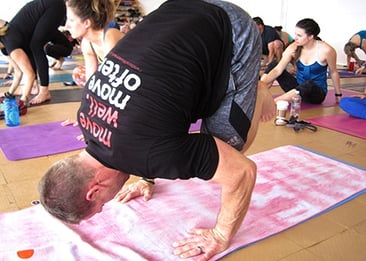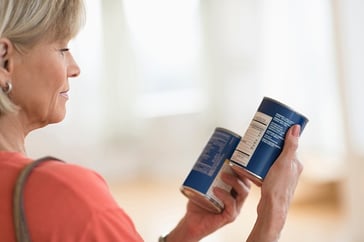 What would life be without mistakes? It would be pretty boring, if you ask me. Making mistakes is the best way to learn. One mistake that most people have made is arriving at the gym and thinking, “What am I going to do here today?” I know I have done this plenty of times. When this happens, your motivation for your workout might decrease because you may just end up picking something that doesn’t really light a fire under you.
What would life be without mistakes? It would be pretty boring, if you ask me. Making mistakes is the best way to learn. One mistake that most people have made is arriving at the gym and thinking, “What am I going to do here today?” I know I have done this plenty of times. When this happens, your motivation for your workout might decrease because you may just end up picking something that doesn’t really light a fire under you.
How Can I Avoid Workout Uncertainty?
When it comes to exercise, there should always be a reason behind what you’re doing. Whatever that reason may be (heart health, losing some body fat to impress a significant other, or just looking good for beach season), you should know the purpose behind your exercise before you begin. (Here ’s how to get started on fitness goal setting.)
Once you have established your goal for exercise, the next step is to find a goal-specific training program to follow. I would highly recommend seeking a professional for assistance. They will assess where you are now, help you establish where you want to be physically, create a program that fits your needs, and help you get to that end goal you’ve been chasing.
What if I Enjoy the Freedom of Creating My Own Workouts?
Great! You are one of the few who stay on top of their own programs, and you like to concoct some fun workouts. However, this can be a bit tedious sometimes. Some days you feel rushed, and while getting to the gym for a workout is feasible, taking the time to plan for your workout may not fit into your schedule.
Also, there’s no shame in admitting that sometimes you just run out of ideas! That’s one of the best parts of the fitness community: sharing ideas. Other people in the fitness world are coming up with tons of different exercises and workouts, and you may not know about them unless you actively seek them out. Keep your eyes and ears open in the gym and you may just stumble upon your new favorite exercise.
The Bottom Line: You Don’t Become a Better Painter by Practicing Basketball
This is the idea of specificity. Practice the craft in which you wish to become better. Pick a goal and stick to it. If you are constantly switching up your goals, you will be trying to get to 100 different destinations all at the same time. Wait until you accomplish the task at hand before thinking, “What’s next?”
If you ever find yourself unsure of your goals, how to decide on a goal, or how to reach your goals, talk to any of the Health Fitness Specialists at NIFS. We can help to get you on a clear path toward a specific goal.
This blog was written by Aaron Combs, NSCA CSCS and Health Fitness Instructor. To find out more about the NIFS bloggers, click here.


 I recently attended an event that was pretty far outside my usual activity base. I consider myself a lifetime mover and a lifetime learner, but I have to admit this event had me a bit concerned about my success rate, comfort level, and quite honestly my enjoyment. After all, I was supposed to be on vacation. The event I am referring to is a rather large one called
I recently attended an event that was pretty far outside my usual activity base. I consider myself a lifetime mover and a lifetime learner, but I have to admit this event had me a bit concerned about my success rate, comfort level, and quite honestly my enjoyment. After all, I was supposed to be on vacation. The event I am referring to is a rather large one called  Prior to this trip to
Prior to this trip to  I am a huge believer that if there is a will, there is a way, and to always find ways to get things done. Just like the tree in the picture growing on top of a rock, it found a way to get tall and strong even though it is out of its usual environment of growing from the ground. IT FOUND A WAY. You can always find a way to eat right, exercise, get enough sleep, decrease stress; you just have to reach and work for it. There is a way; find it. This tree did, and so can you.
I am a huge believer that if there is a will, there is a way, and to always find ways to get things done. Just like the tree in the picture growing on top of a rock, it found a way to get tall and strong even though it is out of its usual environment of growing from the ground. IT FOUND A WAY. You can always find a way to eat right, exercise, get enough sleep, decrease stress; you just have to reach and work for it. There is a way; find it. This tree did, and so can you. For many triathlon participants, the swim is the most difficult discipline. Open-water swimming is different than following the black line on the bottom of a pool. Here are some tips to help the swim portion of the race go more smoothly.
For many triathlon participants, the swim is the most difficult discipline. Open-water swimming is different than following the black line on the bottom of a pool. Here are some tips to help the swim portion of the race go more smoothly.
 So many people have been expectantly waiting for this hot summer weather to be able to get outside for their workouts. And I can tell you that I am also one of those people; but there are some dangers behind the dog days of summer that we all need to be aware of.
So many people have been expectantly waiting for this hot summer weather to be able to get outside for their workouts. And I can tell you that I am also one of those people; but there are some dangers behind the dog days of summer that we all need to be aware of. In January I wrote about
In January I wrote about 
 It then dawned on me that if it was uncomfortable for me to maintain good posture for a few seconds, imagine the effect these deficiencies will eventually have on my muscularity, the efficiency of my resistance training in regard to compensation for the targeted muscles, as well as the greater postural deficiencies that naturally occur as we get into our later years.
It then dawned on me that if it was uncomfortable for me to maintain good posture for a few seconds, imagine the effect these deficiencies will eventually have on my muscularity, the efficiency of my resistance training in regard to compensation for the targeted muscles, as well as the greater postural deficiencies that naturally occur as we get into our later years.  Over the past six to eights weeks, I have been creating summer workout manuals for the teams that I work with during the school year. These manuals are meant to bridge the strength and conditioning gap between the time they leave for summer break and when they return for the fall semester. There is much to be gained, or lost, through a summer of hard work (or lack thereof). Although summer break is a true “break” for most athletes academically, there never really is a true break for training.
Over the past six to eights weeks, I have been creating summer workout manuals for the teams that I work with during the school year. These manuals are meant to bridge the strength and conditioning gap between the time they leave for summer break and when they return for the fall semester. There is much to be gained, or lost, through a summer of hard work (or lack thereof). Although summer break is a true “break” for most athletes academically, there never really is a true break for training. The deadlift is a creature all its own. There is no other exercise like it, and there are so many reasons behind that. It can be one of the most beneficial total-body exercises, yet at the same time, one of the most detrimental if performed incorrectly. Numerous factors go into this very important lift, but there are a few tricks to keep in mind to help you set up and perform well consistently while avoiding injury.
The deadlift is a creature all its own. There is no other exercise like it, and there are so many reasons behind that. It can be one of the most beneficial total-body exercises, yet at the same time, one of the most detrimental if performed incorrectly. Numerous factors go into this very important lift, but there are a few tricks to keep in mind to help you set up and perform well consistently while avoiding injury.